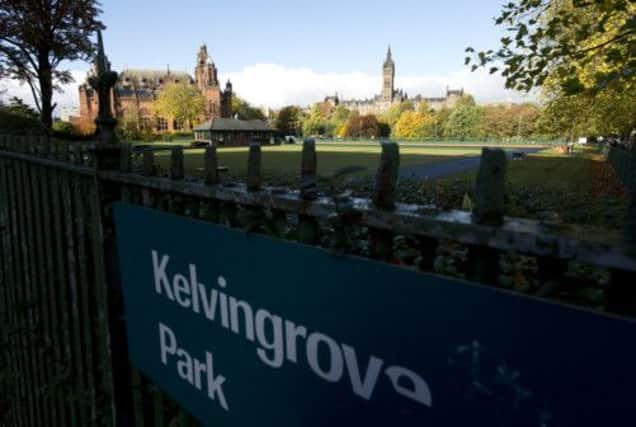Glasgow 2014: Iconic backdrop can inspire Scots


The shooting takes place in Carnoustie, which will inevitably render the exploits of Jen McIntosh and company somewhat peripheral to the party happening a hundred miles away, which is a pity. But bowls is a different matter.
“There will be a huge impact with the location of our sport at Glasgow 2014,” says team manager Ricky Taylor. “Kelvingrove is probably the most iconic venue. You’ve got the 15th-century architecture of Glasgow University that you don’t have with any other venue anywhere else in the world. So what excites me is the prospect of a Scottish gold medallist against that backdrop. It could have a huge impact for our sport because I think the media attention will be that bit greater than what it would be anywhere else.”
Advertisement
Hide AdAdvertisement
Hide AdIf it sounds like Taylor is being presumptuous in forecasting Scottish medal success in Glasgow’s elegant West End, he has every right to be confident in his team. Alex “Tattie” Marshall and Paul Foster are current world pairs champions, indoors and out, and have won nine world titles between them. Stewart Anderson is the world indoor singles champion. Foster is the world singles No 1. Scotland are also the reigning outdoor champions in women’s fours and men’s triples. Kevin Wallace and Robert Conway are world champions in their respective para-sport classifications.
How Team Scotland came away from Delhi in 2010 without a bowls medal of any colour is mystifying. It was the first time since 1978 they had not struck gold. However, the hidden benefit is that Sportscotland have only set the sport a target of two medals at Glasgow 2014, which looks extremely achievable. “We are in a good position in terms of the strength of the squad,” says Taylor. “Have we peaked too soon? I think if you look at the history of Scottish bowls we have a very good history of doing well at major championships in the past.”
More important than success, arguably, for bowls next summer is the opportunity to enlarge itself and annihilate one or two stereotypes. The ignorant perception says that this is a sport played by people on the senior side of their physical prime, watched by people on the senior side of their dotage – all in transparent ponchos. A squad of 19 was named recently by Bowls Scotland and this will be whittled down to ten in April. Five men and five women will then be split into singles, pairs, triples and fours, with each bowler allowed to enter two events. Willie Wood, in case you were wondering, is no longer in the frame, even though the grand old patriarch of the lawn still competes at club level.
Taylor says that the average age of the Scottish squad is somewhere in the late 30s – it used to be over 40 – which makes Thomas Mann, at 33, something of a leveret. “I was lucky enough to go to the Delhi Games through the Achieve 2014 programme, and that was a great experience. But the chance to take part in a home Games, with your family and friends close to you and the whole country behind you, is a dream come true – Roy of the Rovers stuff,” says Mann.
“I don’t think this is the only time we can get the country watching bowls but it is a huge opportunity, and if we can contribute to the Team Scotland medal tally it will be important in terms of developing the profile of the sport and the interest at youth level.”
George Sneddon, who won pairs gold alongside Marshall in Manchester in 2002, will be Taylor’s assistant team manager in Glasgow and has already witnessed a culture shift.
“When I was involved back in 2000, 2002, Willie Wood was still playing and still playing really well. I was in my fifties then and Willie was in his sixties, but we still had Alex Marshall who were in their thirties and are now in their forties, and they are the senior players,” says Sneddon.
“In bowls, even back at club level, the age group varies from ten years old right up to sixty and seventy, and everyone seems to blend and get on well together. You find that youngsters warm to senior players, and the senior players love the youngsters being involved, so they integrate quite well. We have a drop-off in younger players at the moment and we need to address that, and Bowls Scotland is addressing that.
Advertisement
Hide AdAdvertisement
Hide Ad“In Manchester, the weather wasn’t very good and the greens were indifferent, not suited to the Manchester weather, but the atmosphere when we won it, 13-12 against England and on the last end, was fantastic. I think the crowd in Glasgow will be on a whole different level, because it’s a home support. Heaton Park was a bit out of the way and I think it will be totally different to the atmosphere and passion that we will see at Kelvingrove.”